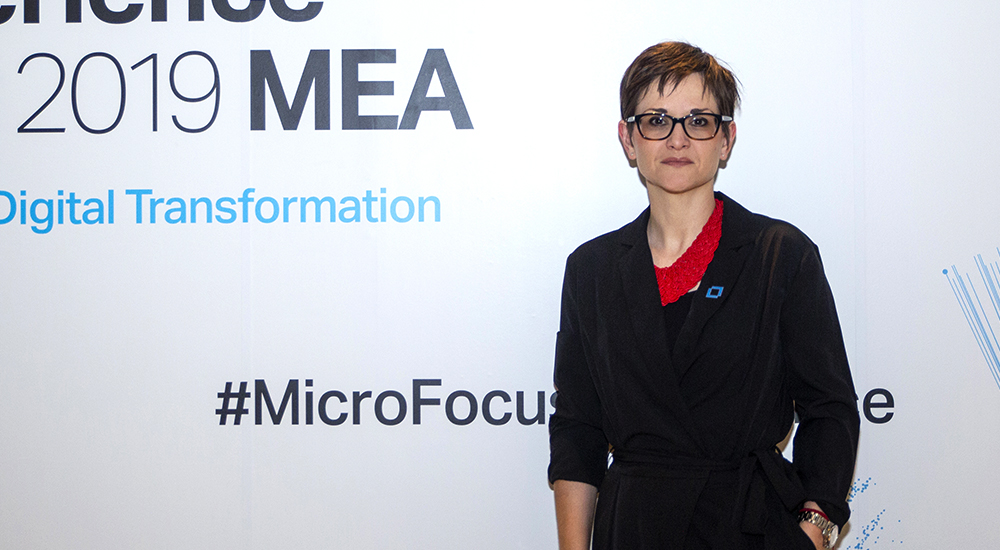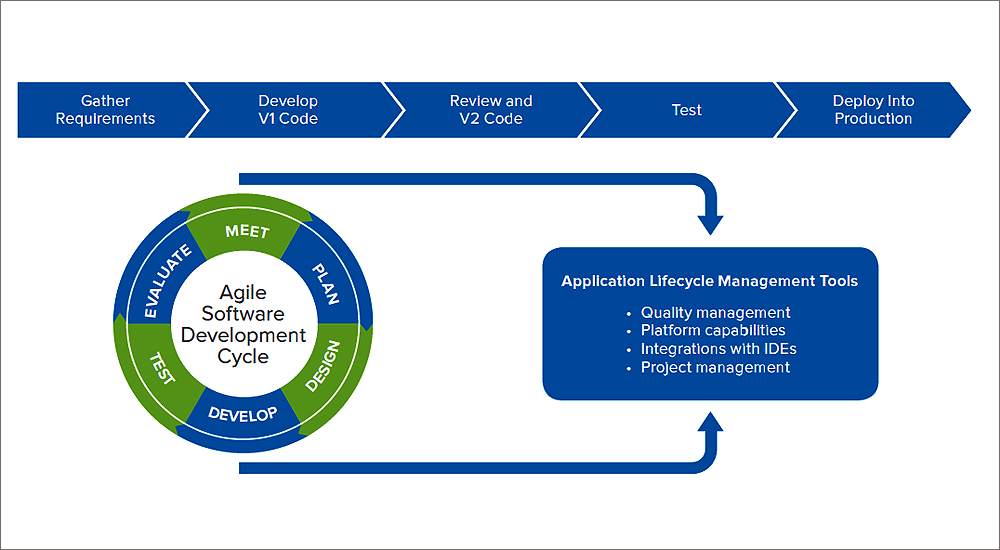Why transformation is less of forklift and more of coexistence with legacy

Over the years, for organisations, the relationship between business and IT has not changed. What has changed is the balance of importance across speed, risk and cost. Today, organisations are trying to digitise all manner of processes whether the front end or back end, and this has meant that transformation is taking many forms. While speed, risk and cost, are still fundamental outcomes that people are trying to achieve, but they need to do them in a different way.
Says Genefa Murphy, SVP and Chief Marketing Officer, Micro Focus, “The big thing that we see is how do you make more informed and quicker decisions to achieve speed, risk and cost, and I think the weighting of each of those is different.”
The challenge is to balance, the above-the-line mandate to drive transformation with the below-the-line mandate to manage the operations of the business, points out Genefa. “How do you balance the cost of transforming and running at the same time.”
As an organisation, Micro Focus helps businesses through four core areas of digital transformation – Enterprise DevOps, Hybrid IT Management, Predictive Analytics and Security, Risk and Governance. Micro Focus software provides critical tools needed to build, operate, secure, and analyse their enterprise. By design, these tools bridge the gap between existing and emerging technologies—enabling faster innovation, with less risk, in the race to digital transformation.
Assessing the state of business application is a critical part of digital and business transformation. There are three aspects to consider what do you change; what do you keep; and what do you retire. Micro Focus solutions help to answer the following questions, what applications do you have; what infrastructure are they running on; and how much are they costing you.
Micro Focus helps IT to share information better with business, enabling both an effective top-down and bottom-up, decision making process. According to Genefa, with this proactive approach in place, it is about innovating faster with less risk.
Micro Focus talks to various executives in the top-suite including CIO, CISO, CMO, CTO, Chief Digital Officer, Chief Product Officer. And amongst its top global market segments are banking and finance, telecom, oil and gas, and the public sector. PwC and Deloitte are key global consulting channel partners who manage process transformation and change management along with Micro Focus.
The mainframe environment is a typical use case between the old and the new. Applications and databases hosted in a mainframe environment, reach back into decades of years. Yet their continuity depends on being able to embrace modern digital platforms, while running the legacy applications and processes, supporting many global empires.
“To get off the mainframe is incredibly expensive. There are a ton of customers who would love to not have mainframe,” says Genefa. And that is the reason that Genefa stresses, “You need the ability to run on and transform.” Global trading and banking applications continue to run on mainframes because of the speed and robustness as well as the huge baseline of historical data.
Many of today’s digital platforms have intuitive and easy to use, responsive front ends, that meet the criteria for exciting customer experience. But the question, Genefa asks, is whether they have the ability to connect to the legacy back ends that continue to be prevalent in global organisations. “So, you need to be able to do both,” she stresses.
Another reason why transformation projects may fail is the overemphasis on technology and the defocus on process and legacy data. Any attempt to transform the legacy data and legacy processes is expensive and may therefore removed from the objectives of transformation – a fundamental mistake.
Most digital transformations fail right at the initial outset, is Genefa’s observation. “You have to respect how do you get access to all of that back end data, that quite frankly is going to cost you too much money to transform.”
“I have spoken to customers who have been trying to transform something for four, five, six, seven years. But, because people do not look at the process properly, because they try and have technology solve the problem without doing management of change, we have seen a lot of customer transformations fail,” she emphasizes.
Why both agile and waterfall models need to coexist in application transformation
Every organisation needs to choose the best blended road map to transform legacy business critical applications involving people and process and development methodologies.
The transformation of application delivery is happening in incremental, deliberate steps at most organisations. Traditional development remains relevant. Success depends on building on what is already proven to work. Best practices include combining traditional development with agile, which bridges old and new technologies in the change process.
Enterprise Agile frameworks contribute to beneficial outcomes, as does integrating agile and DevOps. A focus on business value also pays off. Choice of application lifecycle management tools is a key factor, with end-to-end, automated solutions giving development and IT operations teams the best opportunity to realise transformation objectives.
Despite the hype surrounding the movement to agile transformation of application development, most organisations seem to be somewhere in the early or middle stages of the process. Indeed, almost all businesses now have some agile going on, along with DevOps. However, it is quite rare for an organisation to have completely phased out the traditional waterfall development.
DevOps refers to the combining of the traditionally separate activities of software development and IT operations. In contrast to the standard practice of developers sending finished code to Ops for release, DevOps puts the Dev and Ops processes and teams into a single structure. Theoretically, DevOps will work with any software development methodology. It is intended for agile, however. That is the best fit.
Challenges
It is challenging to make the move to agile in a way that is meaningful for a business. It is not just about the application lifecycle management tools, it is about the process first, and that the people have to be on board with it. This may involve blending methodologies. This is one reason for the relatively slow progress.
As the end users of a Micro Focus comment:
- It is a complete upheaval of literally the whole organisation, to go from Waterfall to agile. We are trying to implement agile methodologies in DevOps right now.
- In terms of how our tools and processes are evolving to adapt to the change from traditional Waterfall development, it is quite difficult because we have been working with the classic Waterfall method forever.
- We are in a transition to what we call Water Scrums. We cannot let go of all old Waterfall processes but we are trying to adapt as many agile processes as possible.
- It will take two, three, four years to come to a stable, new process of for working with a more agile methodology. We are digging into that and trying to adapt as fast as possible.

Best fit
The consensus in the industry, is that traditional development is still relevant. In addition, it seems that implementing agile by itself does not accelerate application delivery. The goal, instead, should be to discover and implement an optimal path to an application delivery transformation that suits a particular organisation.
With respect to how tools and processes are evolving to adapt to the change from traditional Waterfall, one of the things an organisation is finding is that it is not a switch that you turn on, that you are traditional one day and you are agile the next.
Having tools that are flexible enough to accept variability, and that are flexible enough to adjust to project teams transitioning and becoming more agile as they go along, is important. You cannot become agile on day one, once you make the decision that is the direction you want to go. Transitions take time and adjustment.
What is supported is for project teams doing a bit of both, what used to be called hybrid. It is integrating of their agile project management tool, into a traditional workplan tool, so that they can see the full breadth of their project progress across both more traditional tasks and agile tasks in a single place. In other words, bridging that gap by using multiple tools and integration.
To succeed and justify the investment of time and resources, a transformation of application delivery must demonstrate tangible business value. This may or may not mean an actual hard dollar return. However, the business has to benefit from the project or it will not succeed. Business value could take the form of improved collaboration between stakeholders.
Key takeaways
- Discover an optimal path to application delivery transformation that suits an organisation.
- Transformation of application delivery must demonstrate tangible business value.
- Business has to benefit from the project or it will not succeed.
- Business value could take the form of improved collaboration between stakeholders.
- Despite hype surrounding agile transformation, organisations are somewhere in early or middle stages.
- All businesses have some agile going on along with DevOps.
- It is rare for an organisation to have phased out traditional waterfall development.
- It is challenging to make the move to agile in a way meaningful for a business.
- It is not just application lifecycle management tools; it is about process and people.
- Blending methodologies is one reason for the relatively slow progress.
- It is not a switch that you turn on, traditional one day and agile the next.
- Having tools flexible enough to adjust to project teams transitioning and becoming agile is important.
- You cannot become agile on day one, once you make the decision that is the direction you want.
- Transitions take time and adjustment.
- What is supported is for project teams doing a bit of both, what used to be called hybrid.
- Integration of agile project management tool, into a traditional workplan tool.
- Bridging that gap by using multiple tools and integration.
Excerpted from: Four Best Practices for Application Delivery Transformation, by IT Central Station, Micro Focus.





